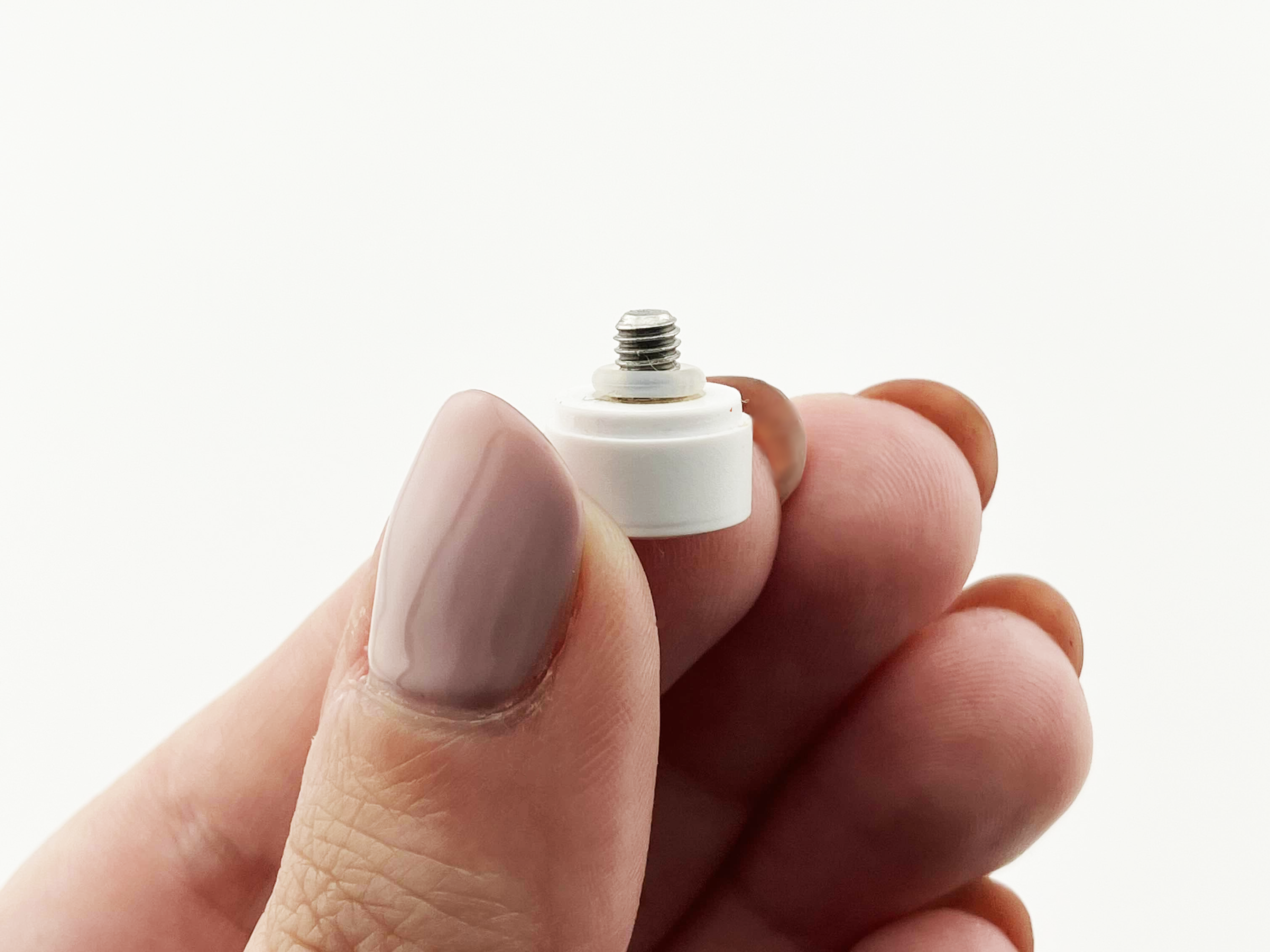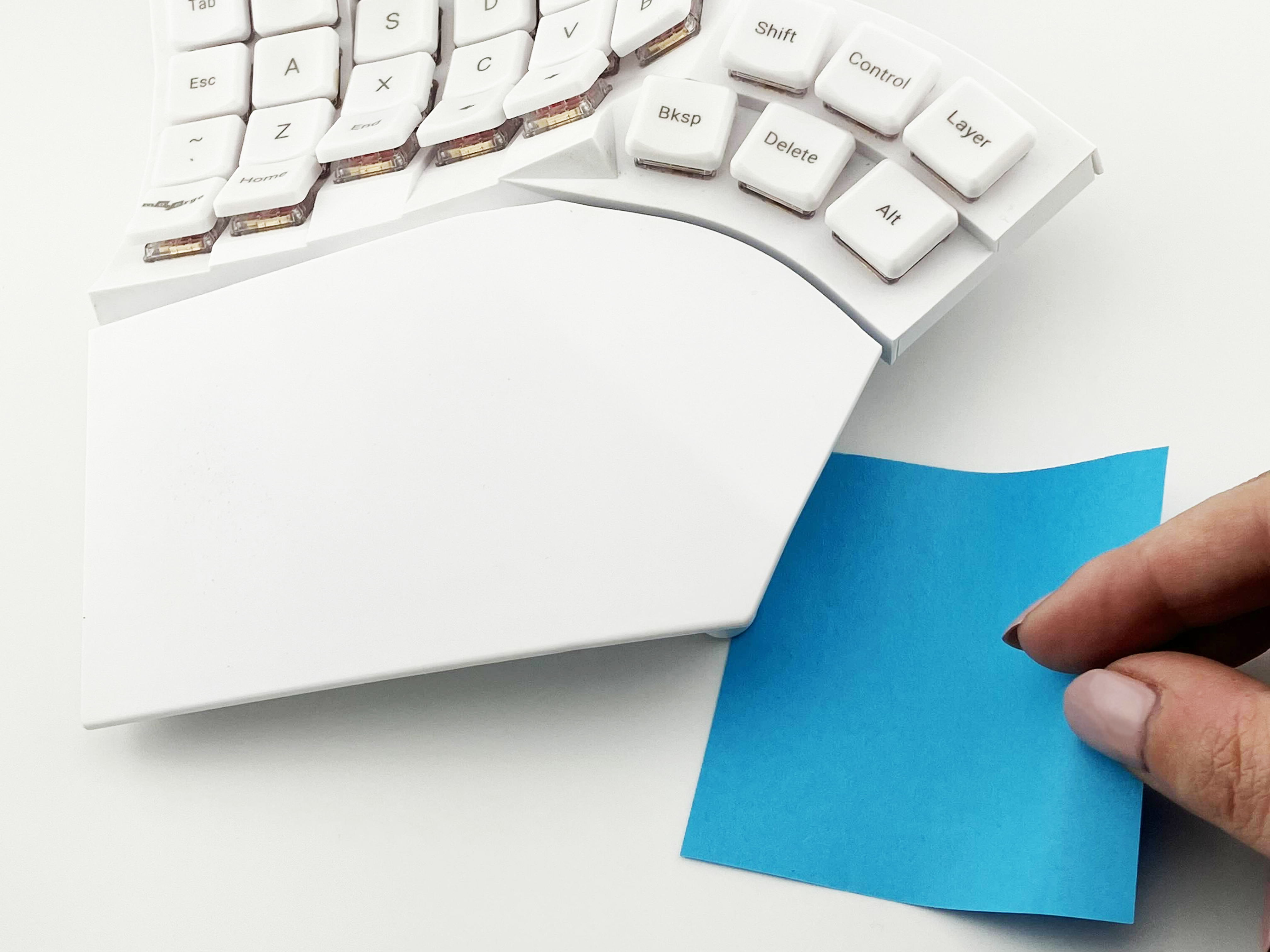Re-leveling the Glove80 without tenting¶
Glove80 may need re-leveling to ensure it sits flat and stable on your desk.
Before levelling¶
When levelling Glove80 without using tenting, we recommend using the included silicone O-rings from the Glove80 accessory kit.

If the adjustable feet on Glove80 (five if palm rest is attached, three if palm rest is removed) do not yet have O-rings installed, first remove each adjustable foot by turning it counter-clockwise until it comes off, place an O-ring onto the threaded shaft of each leg, and then replace the foot.


Using O-rings helps with levelling Glove80 when not tenting in two ways. First, tightening a foot against an O-ring secures it against freely spinning, and helps prevent the screw thread from moving and losing its positioning over time. Second, using an O-ring also helps prevent accidentally adjusting the feet so that the plastic body of the keyboard contacts the table and causes sliding.
To re-level Glove80¶
-
Place one half of Glove80 on a flat surface. Turn all adjustable feet clockwise until they are gently tightened against the O-rings.
-
Level the outer feet: slightly lift the thumb cluster to tilt Glove80 towards its outer (pinky-finger) side, so that it is resting only on the three outer feet (two if palm rest is removed). If all three feet are not sitting evenly flat on the desk, further tighten the longer feet by turning them clockwise until all three feet are flat on the desk.
Tip
If you have difficulty making the feet level while remaining tight against the O-rings, see the section Selecting the right O-ring.
-
Place the thumb cluster back on the desk surface. Now consider the three adjustable feet on the thumb-cluster side (two if palm-rest removed). If all three feet are not sitting evenly flat on the desk, further tighten the longer feet by turning them clockwise until all three feet are flat on the desk.
-
Recheck all six feet, making sure they are all flat on the desk, and adjusting as necessary.
Tip
You can check the level by trying to slide a piece of paper under each foot to make sure that it's firmly contacting the desk. Finally, slide the piece of paper underneath the plastic body of the keyboard: it should not touch the desk in any place.

Selecting the right O-ring¶
Note
Please see Tenting, tilting and custom mounting accessories for a visual guide to the accessory kit.
The accessory kit includes two thicknesses of O-rings. A good starting point is to use the thick O-rings on the inner (thumb side) feet, and the thin O-rings on the outer (pinky side) feet. This set-up works in most cases, but you may find that you need to make further adjustments. You can tell that the correct O-ring has been selected when you level the keyboard: you should feel the O-ring being compressed and holding the foot firmly when it is in the level position.
If you discover during levelling that a foot is not tight against its O-ring in the level position, then the O-ring is too thin: you can add an additional O-ring. O-rings can become thinner over time as they are compressed: if you find an O-ring has lost its thickness and become loose, you can replace it or add an additional O-ring.
Alternatively, if the foot cannot be tightened enough to reach a level position, the O-ring is too thick: you can replace it with a thinner O-ring, or even entirely remove the O-ring and tightly screw the foot down to the keyboard leg. If you remove the O-ring, make sure to check that the plastic body of the keyboard is not contacting the table after levelling.